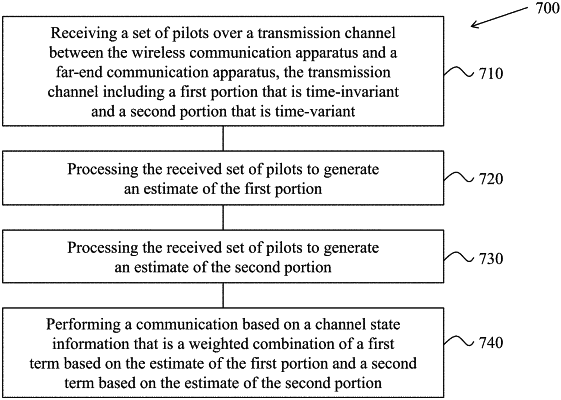| CPC H04W 72/542 (2023.01) [H04B 17/309 (2015.01); H04L 5/0007 (2013.01); H04L 5/0048 (2013.01); H04L 25/025 (2013.01); H04L 25/0226 (2013.01); H04W 72/566 (2023.01)] | 20 Claims |

|
13. A method for wireless communication, implemented at a wireless communication apparatus in a wireless communication system, the wireless communication apparatus being in communication with each of a plurality of far-end communication apparatuses over a corresponding wireless channel of a plurality of wireless channels, the method comprising:
receiving, from a respective far-end communication apparatus of the plurality of far-end communication apparatuses, a set of pilots over a first wireless channel of the plurality of wireless channels, the first wireless channel including a first portion that is time-invariant and a second portion that is time-variant;
processing the received set of pilots to generate an estimate of the first portion;
processing the received set of pilots to generate an estimate of the second portion;
scheduling a plurality of data transmissions from the wireless communication apparatus to each of the plurality of far-end communication apparatuses based on the first portion of the corresponding wireless channel; and
performing at least one of the plurality of data communications based on a channel state information that is a weighted combination of a first term based on the estimate of the first portion and a second term based on the estimate of the second portion.
|